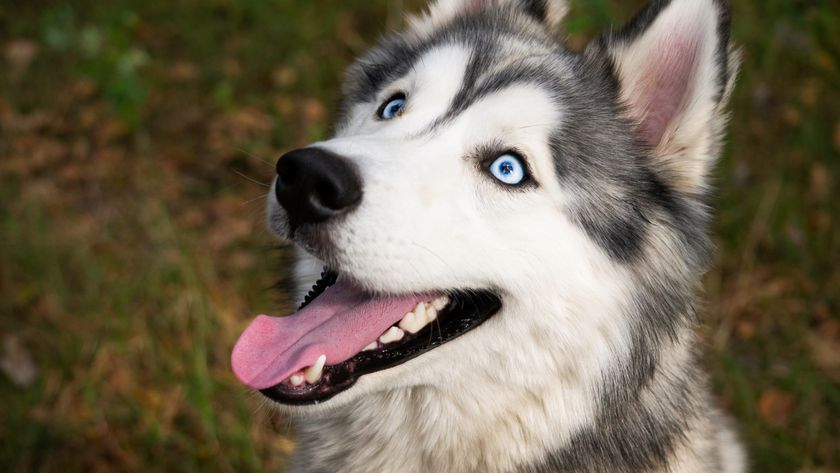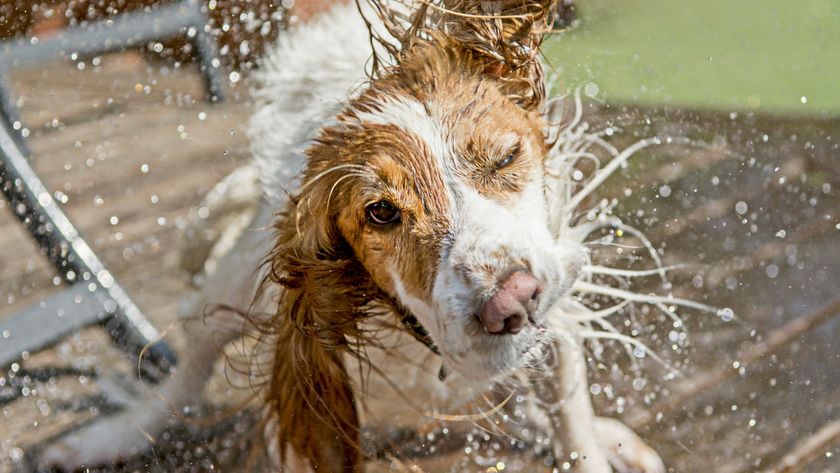Video of Loyal Dog in Japan Reveals Canines' Social Roots

A partially wet and muddied dog, seeming to shiver from both confusion and cold, runs toward a cameraman in the Arahama area of Sendai, Japan, leading him over to an injured fellow canine, lying among the wasteland of debris caused by the earthquake and tsunami that hit on March 11.
The tearjerking video, making its rounds on the Web, is a reminder of dogs' evolutionary roots as well as their social nature, according to an evolutionary biologist. [In Pictures: Japan Earthquake & Tsunami]
"I think it's an important story, because it stresses that not only do dogs bond with humans but they bond to one another as well," said Marc Bekoff, a former professor of ecology and evolutionary biology at the University of Colorado, Boulder, and a fellow of the Animal Behavior Society.
For instance, he said, various animal welfare organizations cite anecdotes of dogs grieving the loss of a fellow canine, and plenty of dog owners, including Bekoff, will attest to the strong ties dogs have with each other.
Relationships between dogs, including the two filmed in Sendai, actually go beyond bonding.
"The beauty of animal friendships is that they go well beyond bonding. They involve reciprocal aid, defense of the other in need, cleaning the other's injuries, food sharing, grooming, support in fights, consolation after distress, and so on," Emory University primatologist Frans de Waal told LiveScience. "They involve acts of empathy, and now recent studies have shown empathy in even chickens and mice, we can assume it to be a very widespread capacity indeed," said de Waal, who is also the director of the Living Links Center.
He added, "What we see in these two dogs [in Sendai] is probably more than just a bond, but involves trust, commitment, and in the end a relationship that is or has been emotionally beneficial for both parties." [See video of the dogs]
Sign up for the Live Science daily newsletter now
Get the world’s most fascinating discoveries delivered straight to your inbox.
It make sense this dog would sit by its injured kin — a social behavior that may seem humanlike — since dogs did evolve from wolves, some of the most social of animals that show many cooperative behaviors.
For that reason, along with dogs' enculturation into the human world (for instance, some breeds look and "point" in human ways) as well as the fact that some were bred for human companionship and herding abilities, make dogs good models for social cognition in humans, researchers reported in a review paper published in 2003 in the journal Applied Animal Behavior Science.
Dogs and cats also appear to "get" one another. A study of the interactions between cats and dogs living under the same roof found they seem to be able to establish amicable relationships, with no gender differences found. The findings also suggest "that the majority of these dogs and cats understood the particular body language displayed by one animal that has an opposite meaning for the other species," the researchers wrote in 2008 in Applied Animal Behavior Science, adding that the earlier the age of first encounter between the two species, the better is this understanding.
The canine duo in Sendai has since been rescued, according to several news reports. According to Japan Earthquake Animal Rescue and Support, "Many of you have been asking about the YouTube dogs. As far as we know they have been rescued and are safe in Ibaraki. We are still waiting for 'after' photos but will let you know as soon as we hear an update on this," they write in a wall posting on their Facebook page.
"It's a tragedy but it just really shows how social dogs are and how they really thrive on pro-social relationships and bonding," Bekoff told LiveScience. "And people should really respect that." (He added that while many do respect dogs, some people think canines' sad, needy looks and behaviors, for instance, are just a ploy to "play them" or "work them over.")
Jeanna Bryner is managing editor of Scientific American. Previously she was editor in chief of Live Science and, prior to that, an editor at Scholastic's Science World magazine. Bryner has an English degree from Salisbury University, a master's degree in biogeochemistry and environmental sciences from the University of Maryland and a graduate science journalism degree from New York University. She has worked as a biologist in Florida, where she monitored wetlands and did field surveys for endangered species, including the gorgeous Florida Scrub Jay. She also received an ocean sciences journalism fellowship from the Woods Hole Oceanographic Institution. She is a firm believer that science is for everyone and that just about everything can be viewed through the lens of science.



